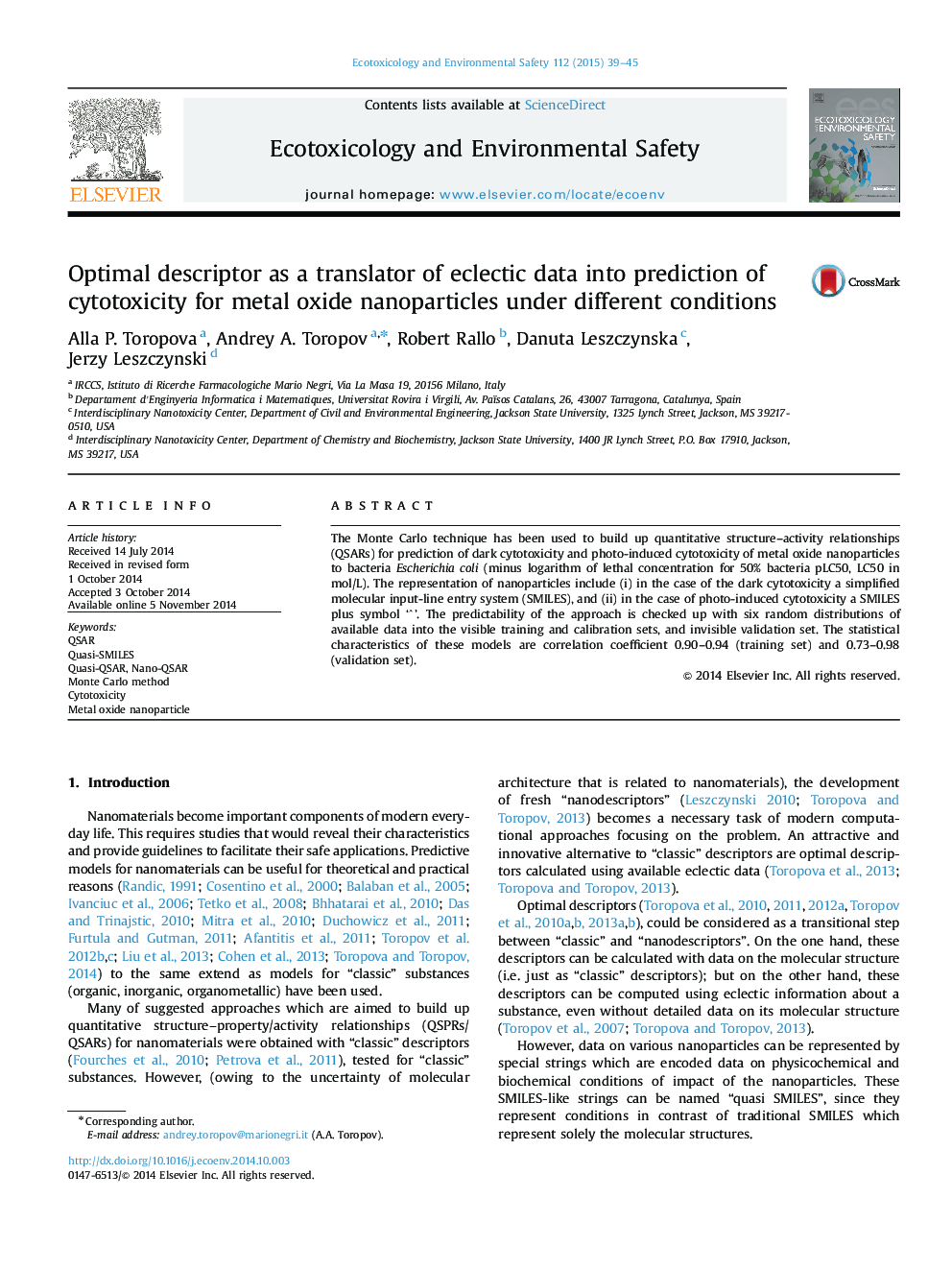| Article ID | Journal | Published Year | Pages | File Type |
|---|---|---|---|---|
| 4419789 | Ecotoxicology and Environmental Safety | 2015 | 7 Pages |
•Predictive model based on available eclectic data is suggested.•Cytotoxicity of metal oxide nanoparticles is examined as an endpoint.•Six random distributions into the training and validation sets are analyzed.•The statistical quality of all six models is good.•Calculations were carried out with the CORAL software available on the Int.
The Monte Carlo technique has been used to build up quantitative structure–activity relationships (QSARs) for prediction of dark cytotoxicity and photo-induced cytotoxicity of metal oxide nanoparticles to bacteria Escherichia coli (minus logarithm of lethal concentration for 50% bacteria pLC50, LC50 in mol/L). The representation of nanoparticles include (i) in the case of the dark cytotoxicity a simplified molecular input-line entry system (SMILES), and (ii) in the case of photo-induced cytotoxicity a SMILES plus symbol ‘ ^ ’. The predictability of the approach is checked up with six random distributions of available data into the visible training and calibration sets, and invisible validation set. The statistical characteristics of these models are correlation coefficient 0.90–0.94 (training set) and 0.73–0.98 (validation set).
